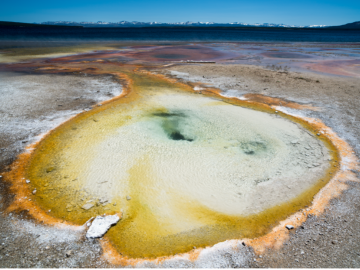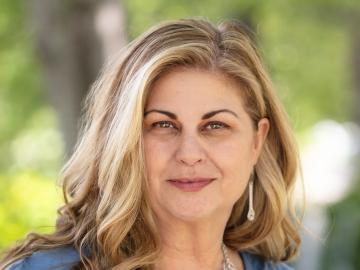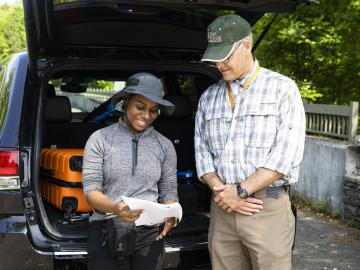
Filter News
Area of Research
- Advanced Manufacturing (2)
- Biological Systems (1)
- Biology and Environment (43)
- Building Technologies (1)
- Computational Engineering (1)
- Computer Science (4)
- Electricity and Smart Grid (1)
- Energy Science (41)
- Energy Sciences (1)
- Fusion and Fission (10)
- Fusion Energy (6)
- Isotope Development and Production (1)
- Isotopes (3)
- Materials (25)
- National Security (8)
- Neutron Science (11)
- Nuclear Science and Technology (13)
- Quantum information Science (1)
- Supercomputing (23)
News Topics
- (-) Big Data (17)
- (-) Biomedical (12)
- (-) Clean Water (10)
- (-) Environment (62)
- (-) Grid (21)
- (-) Molten Salt (2)
- (-) Nuclear Energy (41)
- (-) Space Exploration (10)
- 3-D Printing/Advanced Manufacturing (36)
- Advanced Reactors (10)
- Artificial Intelligence (38)
- Bioenergy (31)
- Biology (29)
- Biotechnology (7)
- Buildings (14)
- Chemical Sciences (24)
- Composites (8)
- Computer Science (58)
- Coronavirus (4)
- Critical Materials (7)
- Cybersecurity (14)
- Education (3)
- Emergency (1)
- Energy Storage (29)
- Exascale Computing (17)
- Fossil Energy (2)
- Frontier (21)
- Fusion (15)
- High-Performance Computing (33)
- Hydropower (3)
- Irradiation (2)
- Isotopes (12)
- Machine Learning (20)
- Materials (59)
- Materials Science (38)
- Mathematics (2)
- Mercury (3)
- Microelectronics (2)
- Microscopy (12)
- Nanotechnology (13)
- National Security (21)
- Neutron Science (53)
- Partnerships (24)
- Physics (20)
- Polymers (6)
- Quantum Computing (12)
- Quantum Science (19)
- Security (5)
- Simulation (29)
- Software (1)
- Summit (18)
- Transportation (30)
Media Contacts

Oak Ridge National Laboratory scientists studied hot springs on different continents and found similarities in how some microbes adapted despite their geographic diversity.

The Exascale Small Modular Reactor effort, or ExaSMR, is a software stack developed over seven years under the Department of Energy’s Exascale Computing Project to produce the highest-resolution simulations of nuclear reactor systems to date. Now, ExaSMR has been nominated for a 2023 Gordon Bell Prize by the Association for Computing Machinery and is one of six finalists for the annual award, which honors outstanding achievements in high-performance computing from a variety of scientific domains.

The Department of Energy’s Office of Science has selected three ORNL research teams to receive funding through DOE’s new Biopreparedness Research Virtual Environment initiative.

Researchers at ORNL are developing advanced automation techniques for desalination and water treatment plants, enabling them to save energy while providing affordable drinking water to small, parched communities without high-quality water supplies.

Yaoping Wang, postdoctoral research associate at ORNL, has received an Early Career Award from the Asian Ecology Section, or AES, of the Ecological Society of America.

Cadet Elyse Wages, a rising junior at the United States Air Force Academy, visited ORNL with one goal in mind: collect air.

Madhavi Martin brings a physicist’s tools and perspective to biological and environmental research at the Department of Energy’s Oak Ridge National Laboratory, supporting advances in bioenergy, soil carbon storage and environmental monitoring, and even helping solve a murder mystery.

Rose Montgomery, a distinguished researcher and leader of the Used Fuel and Nuclear Material Disposition group at ORNL, has been selected to participate in the U.S. WIN Nuclear Executives of Tomorrow, or NEXT, class of 2023 to 2024.

Researchers at the Department of Energy’s Oak Ridge National Laboratory are leading the way in understanding the effects of electrical faults in the modern U.S. power grid.

Nearly 100 interns were introduced to Oak Ridge National Laboratory’s biological and environmental research over the summer of 2023 as mentors and students were eager to share knowledge and skills to address the nation’s energy and environmental challenges.


